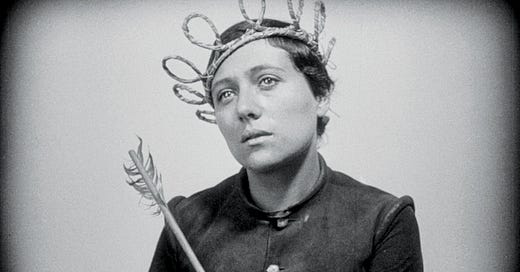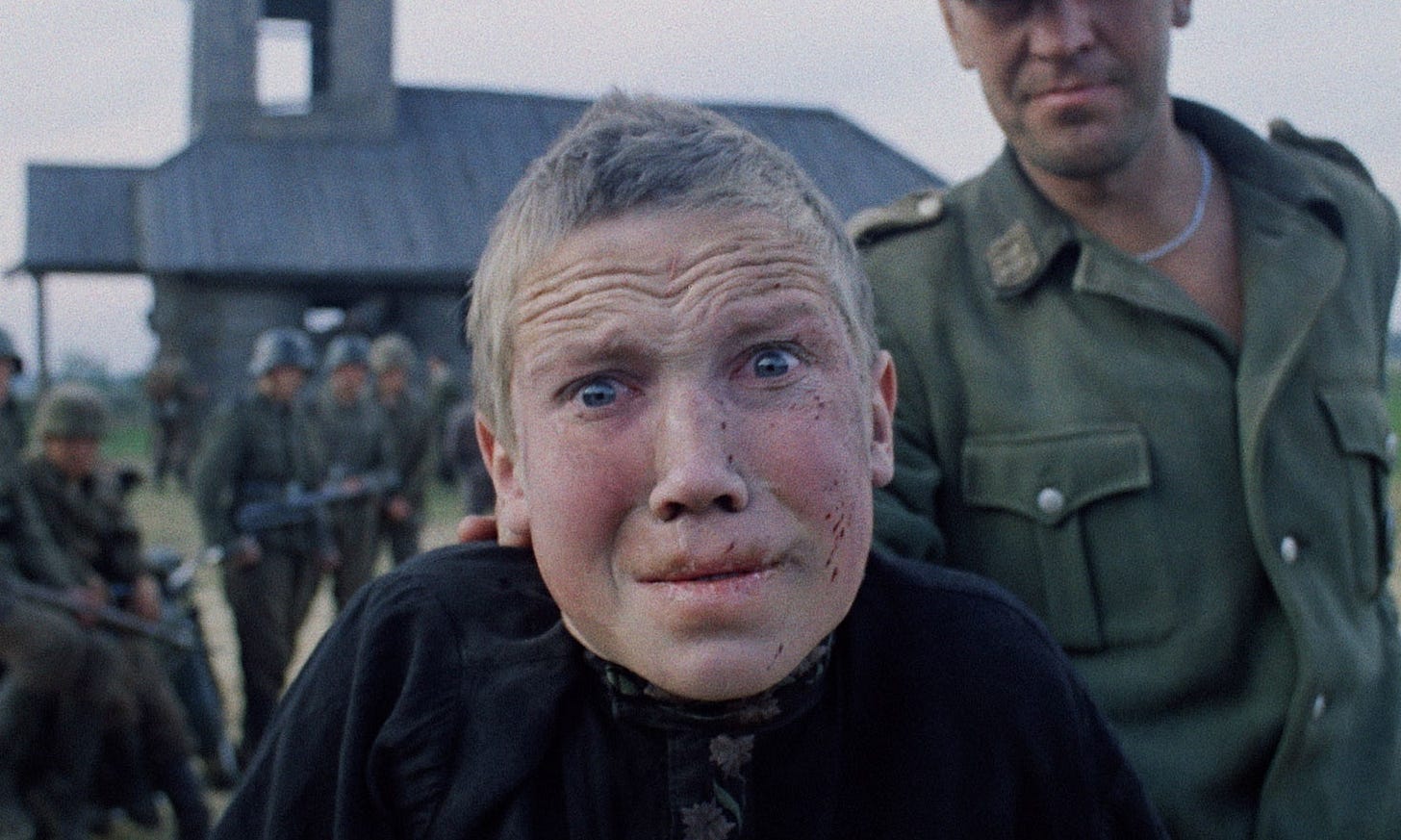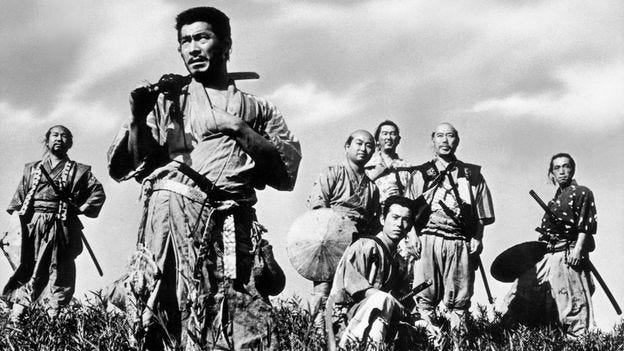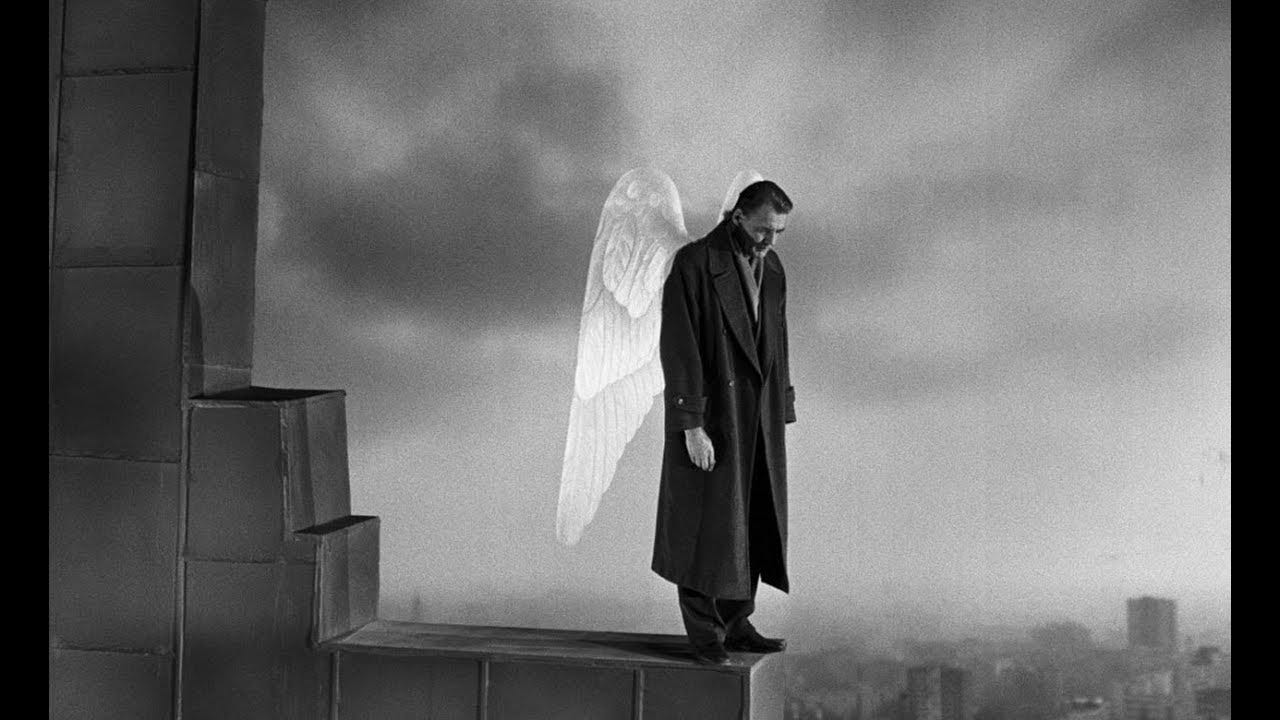Perhaps unbeknownst in the modern-day, there is an undercurrent of anti-Catholicism rooted in the consequences of Bastille Day — a day that commemorates the storming of the Bastille, a Parisian military fortress and prison that became synonymous with monarchal oppression. The seminal event launched the French Revolution and, with it, the rise of the Jacobins, who subsequently subjected the country to reigns of terrors, martyring hundreds of thousands of Catholics in their wake.
The squashing of the faith in France not only meant shuttering churches, but went so far as suspending festivities honoring the 15th century French heroine, Joan of Arc, specifically in Orléans.
Therefore, this past Bastille Day (July 14), my parents and I marked the occasion by watching the silent movie classic, The Passion of Joan of Arc. This author has seen Carl Dreyer’s film before, but several years ago — so I was due for another viewing. Additionally, I purchased the Criterion Collection version, which has incredible special features as well as several different editions of the film based on frame-rates, but that’s another tangent.
Nearly one hundred years after the film first premiered in 1928, The Passion of Joan of Arc is still striking, powerful and, strangely, modern. The starkly white backdrops highlight the intensity of Joan’s test of faith against the clerical leaders — all of whom have unique features — questioning the veracity of her angelic visions, as well as her manly attire. Despite only several film credits to her name, Renée Jeanne Falconetti’s performance is captivating and alluring, reflecting her inner-most thoughts not through words, but through her eyes. It’s one of early cinema’s greatest performances.
The film also demonstrates the pure uniqueness of movies as a creative medium: editing and cinematography, particularly the latter. Dreyer utilizes extreme close-ups to harness the amplified emotions throughout Joan’s trial. And as a testament to the screenplay, based off the trial’s documents, the film nearly foregoes the political nature of Joan’s arrest, which could have bogged down its pace. It instead rightly focuses on the saint, and what she might’ve seen in her last moments on this earthly plane (the last being the crucifix, and her last word being “Jesus”).
Joan’s story is an incredible witness of faith, mirroring that of Our Lord’s road to Calvary. To me, a Catholic would be re-evangelized by the film. To non-Catholics, perhaps evangelization can occur (hopefully!), but nevertheless, one cannot deny the film’s quality and longevity. There is a reason this movie has survived the test of time1.
Unintentionally, The Passion of Joan of Arc led me to viewing other foreign films over the July 15-17, all of which I’ve never seen before.
Come and See (1985)
Second to Steven Spielberg’s Schindler’s List (1993), Elem Klimov’s anti-war film Come and See might be one of the toughest movie experiences I’ve ever endured. The movie follows a 14-year-old Belarusian boy, Florya, and his Homeric odyssey into loss, torture, and the genocidal destruction of his people by the Nazis. Similar to The Passion of Joan of Arc, the cinematography utilizes extreme close-ups to capture the loss of Floyra’s innocence, who is powerfully portrayed by then non-actor Aleksei Kravchenko. In essence, Come and See is the worst version of a coming-of-age story — but it is one of the most captivating films I’ve seen in years. Typically when I watch movies with my siblings, we joke and/or discuss a scene (but mostly the former). That did not happen this time, especially in the last hour-and-a-half. To describe what Florya witnesses is beyond words and beyond evil — and, sadly, a visual understatement of what Belarusians experienced during the Nazi occupation. Beautifully filmed, tragically horrific, it’s a must-see.
High and Low (1963)
My fascination with Akira Kurosawa’s films is only recent, spurred on by the pandemic. Since then, I’ve seen Throne of Blood, Yojimbo, Hidden Fortress, Rashomon among others — mostly the samurai tales. High and Low is the first of Kurosawa’s movies I’ve watched not linked to feudal Japan, instead taking place in a contemporary setting.
The movie opens with Toshiro Mifune as Mr. Gondo, a businessman on the cusp of acquiring a majority of a shoe company. The shoe company’s other board members, however, are disgruntled by his refusal to collectively oust the owner — only known as the “Old Man.” As Gondo’s aspirations are nearly realized, he receives a call from a stranger, who kidnapped his son’s friend and ransoms him for millions of yen. Giving in to the demands would lead to Gondo’s financial ruin; refusing might have a higher cost on his soul and reputation. Without spoiling the film, Kurosawa takes the story in surprising directions, becoming more of procedural police drama that explores the upper and lower classes of Japanese society with more sensitivity than I imagined. A less-talented director (or maybe modern-day director) would most likely treat the wealthy man’s plight with disdain in favor of the financially-struggling criminals, but Kurosawa expertly avoids those heavy-handed pitfalls — treating both groups as human beings. The movie did not feel its length and, I believe, the final scene influenced blockbusters such as The Silence of the Lambs, The Dark Knight, Skyfall and others. If you watch it, you’ll see why.
Plus, the first 30-minutes should be taught in film classes about the importance of blocking.
Seven Samurai (1954)
Kurosawa’s samurai epic — about a group of samurai defending a farming village from bandits — might be the most important and influential movie on this list. I’ve seen the movie’s story remade and recycled in other films like The Magnificent Seven and A Bug’s Life. And it’s a film often cited as one of the greatest ever. Yet, it was also a movie I had never seen until this past weekend.
Personally, the high-praise and hype affected my viewing, but not positively. That’s not to say this is a bad movie. Quite the contrary. Seven Samurai is excellently crafted in a technical sense, and Mifune is charismatic as the orphaned farmer-turned-ronin, Kikuchiyo. The battle scenes are well-executed and the cinematography is fantastic. However, at a whopping 3 hours and 30 minutes, the movie feels its length, and the lack of a formidable, wretched central villain (unlike Eli Wallach’s character in The Magnificent Seven), detracts from the story. Obviously, properly establishing the seven samurai takes time, and the several battle sequences chew up screen-time as well. However, I can recognize the greatness within — but it did not blow me away.
Wings of Desire (1987)
Speaking of movies that felt their length, Wings of Desire nearly eclipses two hours, but felt like three to yours truly. Wim Wenders focuses on long shots and the characters’ dramatic inner-thoughts in an attempt to capture the immortal lives of two angels tasked with bringing hope to the isolated and hopeless in late-1980s Berlin. The loose story follows one of the angel’s desires to join the people — to see color, to feel the ink of the newspaper on his fingers, to taste coffee, to love a woman. Despite bringing hope to God’s creatures, the angels vision of the world is ironically colorless.
The film explores deep themes of humanity, tangibility, love, eternity, story-writing, and even the German experience post-World War II. Humans feel isolated from their neighbors, perfectly represented by the literal split of the city by the Berlin Wall (graffitied to high-heaven!). There is much to chew on, as Wenders’ tale is rich in symbolism — however, it nearly treads on the precipice of pretentiousness, particularly in a drawn-out scene where an angel meets a trapeze artist at a Nick Cave concert. One of the more surprising elements of the movie are the charming performances by Bruno Ganz and Peter Falk. Even though I have some criticisms for the film, I cannot deny it impacted me and reinforced the idea that we can all be an angel — an intercessor to someone’s prayer.
Wenders won best direction at the Cannes Film Festival for Wings of Desire, and the film inspired the American-remake City of Angels, starring Nicolas Cage and Meg Ryan.
Scène Post-générique
All of these movies have a place in the cinematic history, and they’re worth seeing as their influence is in more American movies than you might have anticipated.
If you have any other movies I should review, feel free to comment below. I’ve already been recommended to watch Fritz Lang’s Sunrise, and Kurosawa’s Ran.
And if you’re looking for more of my movie commentary, be sure to check out the silly podcast my siblings and I created during the early days of the pandemic, “Straight to LaserDisc.” Listen here to the first episode about which Indiana Jones movie is better: Temple of Doom or Kingdom of the Crystal Skull.
Side note: Ironically, most of the film prints were destroyed by a fire. Luckily a final edit of the movie survived, only after being discovered in a Norwegian mental institution in the late 1970s - early 1980s.







